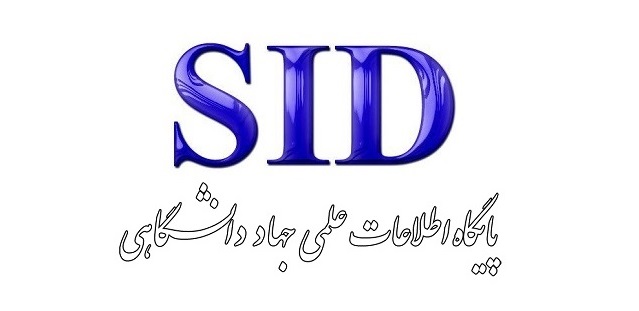Future Directions in Talent Identification for Track and Field: Integrating Science and Multidisciplinary Perspectives
Keywords:
Talent Identification, Track and Field, Future DirectionsAbstract
The identification of talent in athletics remains an essential but delicate problem with the sport's physiological, biomechanical, technical, and psychological heterogeneity. Traditional approaches have relied primarily on results from performance and mere anthropometrics, being prone to bringing forward or biased selections dependent on relative age effects and imbalance in training access. This narrative synthesis combines the current evidence and considers the directions for more efficient, equitable, and evidence-based sporting ability detection systems. It outlines the limitations of uni-dimensional models and proposes multidisciplinary syntheses, involving physiological profiling, biomechanical analysis, psychological testing, and longitudinal observation. New and emerging technologies like wearable sensors, artificial intelligence, machine learning, and digital data analytics are debated for their potential to enhance the accuracy and objectivity of sporting ability detection. The review stresses the need for standardized, culturally sensitive, and ethically sound models that adhere to the principles of long-term athlete development rather than short-term performance. By integrating evidence from sport science, technology, and social environments, future talent identification systems will be more holistic, valid, and inclusive, leading to an improved efficiency of athlete development models in track and field.
Downloads
References
Baker, J., Horton, S., Robertson-Wilson, J., & Wall, M. (2003). Nurturing sport expertise: factors influencing the development of elite athlete. Journal of Sports Science & Medicine, 2(1), 1. https://doi.org/10.1016/S1440-2440(01)80002-5
Balyi, I., Way, R., & Higgs, C. (2013). Long-term athlete development. Human Kinetics. https://doi.org/10.5040/9781492596318
Beauchamp, M. K., Harvey, R. H., & Beauchamp, P. H. (2012). An integrated biofeedback and psychological skills training program for Canada's Olympic short-track speedskating team. Journal of Clinical Sport Psychology, 6(1), 67-84. https://doi.org/10.1123/jcsp.6.1.67
Bergkamp, T. L., Niessen, A. S. M., den Hartigh, R. J., Frencken, W. G., & Meijer, R. R. (2019). Methodological issues in soccer talent identification research. Sports Medicine, 49(9), 1317-1335. https://doi.org/10.1007/s40279-019-01113-w
Brazo-Sayavera, J., Martínez-Valencia, M. A., Müller, L., Andronikos, G., & Martindale, R. J. (2017). Identifying talented track and field athletes: The impact of relative age effect on selection to the Spanish National Athletics Federation training camps. Journal of Sports Sciences, 35(22), 2172-2178. https://doi.org/10.1080/02640414.2016.1260151
Breitbach, S., Tug, S., & Simon, P. (2014). Conventional and genetic talent identification in sports: will recent developments trace talent? Sports Medicine, 44(11), 1489-1503. https://doi.org/10.1007/s40279-014-0221-7
Buchheit, M., Simpson, M. B., Al Haddad, H., Bourdon, P. C., & Mendez-Villanueva, A. (2012). Monitoring changes in physical performance with heart rate measures in young soccer players. European Journal of Applied Physiology, 112(2), 711-723. https://doi.org/10.1007/s00421-011-2014-0
Côté, J., Lidor, R., & Hackfort, D. (2009). ISSP position stand: To sample or to specialize? Seven postulates about youth sport activities that lead to continued participation and elite performance. International Journal of Sport and Exercise Psychology, 7(1), 7-17. https://doi.org/10.1080/1612197X.2009.9671889
Farzan, F. (2025). The Model of Sports Talent Management in the Field of Track and Fields in the Schools of Iraq. Journal of Sports Education Studies and Research, 127-146. https://doi.org/10.55998/jsrse.v35i1.838
Fiaud, V., & Shim, A. (2019). Biomechanics and Skill Analysis In - Coaching for Sports Performance. Routledge. https://doi.org/10.4324/9780429299360-6
Ford, P. R., Yates, I., & Williams, A. M. (2010). An analysis of practice activities and instructional behaviours used by youth soccer coaches during practice: Exploring the link between science and application. Journal of Sports Sciences, 28(5), 483-495. https://doi.org/10.1080/02640410903582750
Ghasemzadeh Mirkolaee, E., Razavi, S. M. H., & Amirnejad, S. (2013). A mini-review of track and field's talent-identification models in Iran and some designated countries. Annals of Applied Sport Science, 1(3), 17-28. http://aassjournal.com/browse.php?a_id=46&slc_lang=en&sid=1&printcase=1&hbnr=1&hmb=1
Gould, D., Dieffenbach, K., & Moffett, A. (2002). Psychological characteristics and their development in Olympic champions. Journal of Applied Sport Psychology, 14(3), 172-204. https://doi.org/10.1080/10413200290103482
Güllich, A. (2017). International medallists' and non-medallists' developmental sport activities-a matched-pairs analysis. Journal of Sports Sciences, 35(23), 2281-2288. https://doi.org/10.1080/02640414.2016.1265662
Koopmann, T., Faber, I., Baker, J., & Schorer, J. (2020). Assessing technical skills in talented youth athletes: a systematic review. Sports Medicine, 50(9), 1593-1611. https://doi.org/10.1007/s40279-020-01299-4
Kruger, A., Pienaar, A., Du Plessis, E., & Janse van Rensburg, L. (2012). The importance of psychological characteristics in potentially talented adolescent long distance runners psychology. African Journal for Physical Health Education, Recreation and Dance, 18(2), 413-422. https://journals.co.za/doi/abs/10.10520/EJC123240
Kusnanik, N. W., Hariyanto, A., Herdyanto, Y., & Satia, A. (2018). Talent identification model for sprinter using discriminant factor.
Li, Q., Li, X., Chui, K. T., & Arya, V. (2023). Exploring the intersection of athletic psychology and emerging technologies. International Journal on Semantic Web and Information Systems (IJSWIS), 19(1), 1-15. https://doi.org/10.4018/IJSWIS.353905
Nikolaidis, P. T., & Son'kin, V. D. (2023). Sports Physiology in adolescent track-and-field athletes: a narrative review. Open Access Journal of Sports Medicine, 59-68. https://doi.org/10.2147/OAJSM.S417612
O'Connor, H., Olds, T., & Maughan, R. J. (2007). Physique and performance for track and field events. Journal of Sports Sciences, 25(S1), S49-S60. https://doi.org/10.1080/02640410701607296
Olmos, M., Capdevila, L., & Caparrós, T. (2024). Heart Rate Variability in Elite Team Sports: A Systematic Review. Open Access Journal of Disease Global Health, 01-12. https://doi.org/10.33140/OAJDGH.02.03.01
Pearson, D. T., Naughton, G. A., & Torode, M. (2006). Predictability of physiological testing and the role of maturation in talent identification for adolescent team sports. Journal of Science and Medicine in Sport, 9(4), 277-287. https://doi.org/10.1016/j.jsams.2006.05.020
Pelletier, L. G., Tuson, K. M., Fortier, M. S., Vallerand, R. J., Briere, N. M., & Blais, M. R. (1995). Toward a new measure of intrinsic motivation, extrinsic motivation, and amotivation in sports: The Sport Motivation Scale (SMS). Journal of Sport and Exercise Psychology, 17(1), 35-53. https://doi.org/10.1123/jsep.17.1.35
Rosenke, D. (2015). Talent Identification and Carding in Canadian Track and Field: Is Our System Empirically Supported? https://era.library.ualberta.ca/items/e3f8a69a-1857-42fd-a1bf-56a3b334ebaf
Ryan, R. M., & Deci, E. L. (2000). Self-determination theory and the facilitation of intrinsic motivation, social development, and well-being. American Psychologist, 55(1), 68. https://doi.org/10.1037/0003-066X.55.1.68
Scott, B. R., Lockie, R. G., Knight, T. J., Clark, A. C., & de Jonge, X. A. J. (2013). A comparison of methods to quantify the in-season training load of professional soccer players. International Journal of Sports Physiology and Performance, 8(2), 195-202. https://doi.org/10.1123/ijspp.8.2.195
Slawinski, J., Bonnefoy, A., Levêque, J. M., Ontanon, G., Riquet, A., Dumas, R., & Chèze, L. (2010). Kinematic and kinetic comparisons of elite and well-trained sprinters during sprint start. The Journal of Strength & Conditioning Research, 24(4), 896-905. https://doi.org/10.1519/JSC.0b013e3181ad3448
Smith, R. E., Schutz, R. W., Smoll, F. L., & Ptacek, J. T. (1995). Development and validation of a multidimensional measure of sport-specific psychological skills: The Athletic Coping Skills Inventory-28. Journal of Sport and Exercise Psychology, 17(4), 379-398. https://doi.org/10.1123/jsep.17.4.379
Thomas, P. R., Murphy, S. M., & Hardy, L. E. W. (1999). Test of performance strategies: Development and preliminary validation of a comprehensive measure of athletes' psychological skills. Journal of Sports Sciences, 17(9), 697-711. https://doi.org/10.1080/026404199365560
Vaeyens, R., Lenoir, M., Williams, A. M., & Philippaerts, R. M. (2008). Talent identification and development programmes in sport: current models and future directions. Sports Medicine, 38(9), 703-714. https://doi.org/10.2165/00007256-200838090-00001
Williams, A. M., Ford, P. R., & Drust, B. (2023). Talent identification and development in soccer since the millennium. Science and Football, 3-14. https://doi.org/10.4324/9781003375968-2
Williams, A. M., & Hodges, N. J. (2005). Practice, instruction and skill acquisition in soccer: Challenging tradition. Journal of Sports Sciences, 23(6), 637-650. https://doi.org/10.1080/02640410400021328
Wormhoudt, R., Savelsbergh, G. J., Teunissen, J. W., & Davids, K. (2017). The athletic skills model: Optimizing talent development through movement education. Routledge. https://doi.org/10.4324/9781315201474
Downloads
Published
Submitted
Revised
Accepted
Issue
Section
License
Copyright (c) 2025 Enayat Hassanpour (Author); Mehran Nasiri; Fahimeh Adib Saber, Hamid Sajjadi Hazaveh (Author)

This work is licensed under a Creative Commons Attribution-NonCommercial 4.0 International License.







